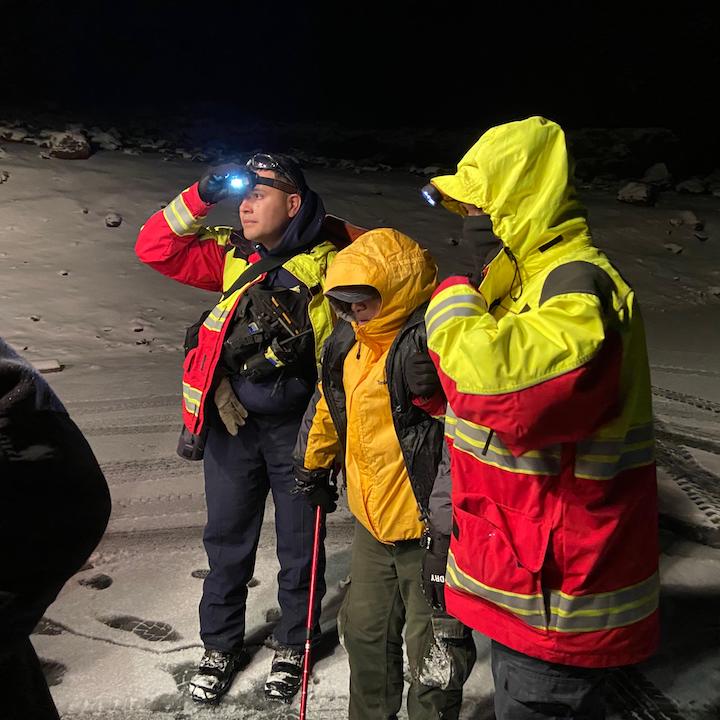Rangers advise caution as winter conditions set in on Mauna Kea
When winter comes to Mauna Kea, which means “White Mountain,” many people want to see the snow in tropical Hawai’i. But rangers caution would-be visitors that coming to the nearly 14,000-foot summit unprepared can be dangerous and even deadly.
On Friday, although temperatures reached 85 degrees at sea level in Kailua-Kona, the National Weather Service issued its first winter weather advisories for freezing rain on the Big island mountain summits.
The National Weather Service said on Friday that Mauna Kea is not expected to see accumulating snow in the coming days. But University of Hawaiʻi Mauna Kea ranger Duwayne Waipa said the snow at that altitude can come unexpectedly.
“When you work on this mountain you can smell weather, you can feel the weather,” Waipa said. “I would say in the next two weeks we’ll get snow, that’s my theory.”
With visitors required to stop at the visitor’s center — at 9,200 feet — to acclimate to the conditions, rangers take the opportunity to provide guidance on how to approach the mountain safely.
“When we have our first heavy snowfall, all of our local people come and enjoy the snow,” said Nahua Guilloz, director of stewardship operations with the University of Hawaiʻi-Hilo Center for Maunakea Stewardship.
Guilloz said on some snow days, rangers can see up to 1,000 cars.
Rangers check brakes, teach people how to use four-wheel drive and encourage parents of young children and pregnant women not to go to the summit because they are more susceptible to altitude sickness. At the summit, there is 40% less oxygen than at sea level.
Those on foot are discouraged from attempting to reach the summit if they arrive at the visitor center by lunchtime because the afternoon fog sets in and can be disorientating. Hikers are advised to bring a buddy.
The summit of Mauna Kea is the highest point in the state of Hawaiʻi and the second-highest peak of an island on Earth. Summit winds can be more than 100 mph.
“The only way we can keep someone from going up there is if they don’t have four-wheel drive and if the vehicle is dirty,” Guilloz said.
Rangers also protect the mountain from invasive species.
Rangers assist people with a variety of issues from flat tires to broken down rental cars to altitude sickness. Guilloz said people not accustomed to driving into fog can drive off the road and into the culvert.
The Mauna Kea Access Road is steep with a 20% grade.
“It’s not just a dirt road, it’s a loose gravel road,” Guilloz said of the eight-mile stretch. “It can be scary because the car can dance a little bit on the road.”
For hikers, Waipa said rangers always get their information in case they don’t see them come down the mountain by sunset. On an average per day, Waipa said they’ve been having eight to 12 hikers.
In the past week, Waipa said the rangers had to assist three to four hikers off the mountain because they had gotten lost after the fog moved in. They were found and escorted off the mauna (mountain) safely.
While the first snowfall is usually fluffy, Waipa said it quickly turns to ice and can be dangerous. On New Years Day, a crash on Mauna Kea Access Road below the visitor’s center resulted in the death of a 9-year-old girl. Several others were injured, including a toddler.
Rangers successfully rescued a hiker last December who got lost on the Humuʻula Trail at the 13,000 ft elevation in thick white-out conditions. The 64-year-old was found hunkered down in a small cave between Waiau Lake and Maunakea Access Road.
So before you go to see the snow, make sure you are prepared.







